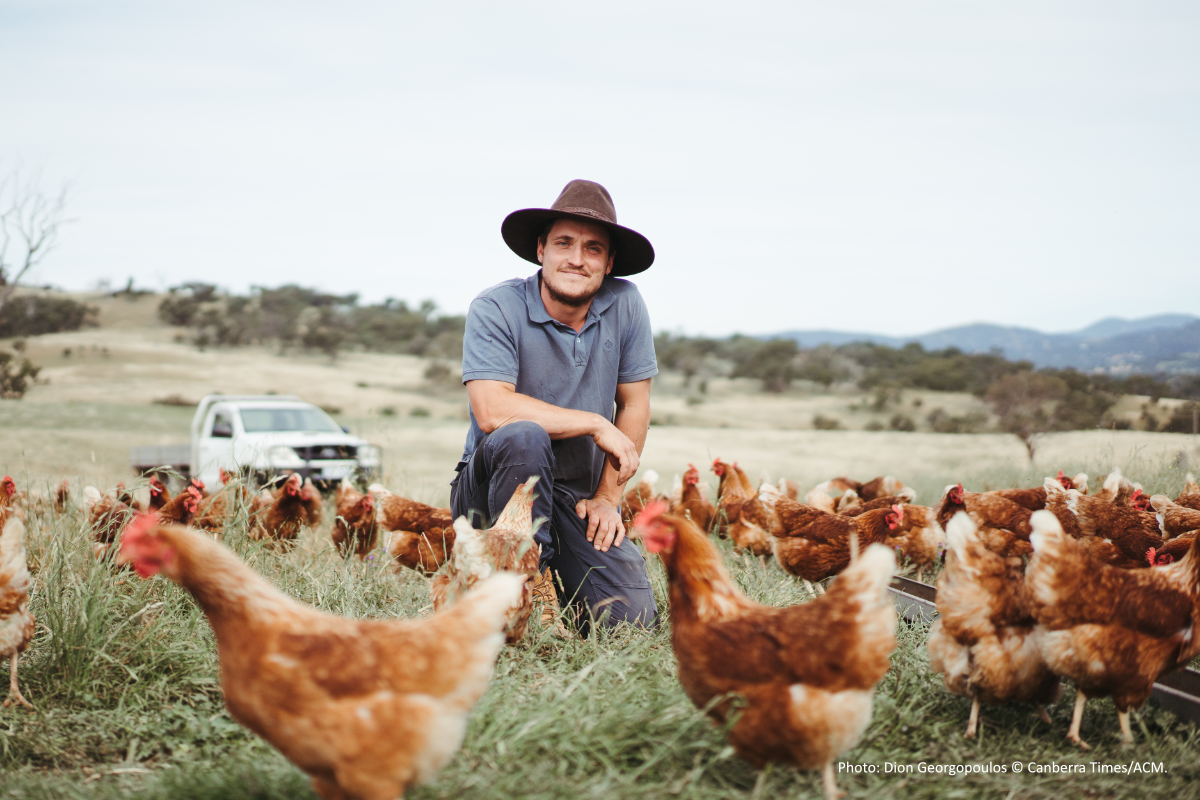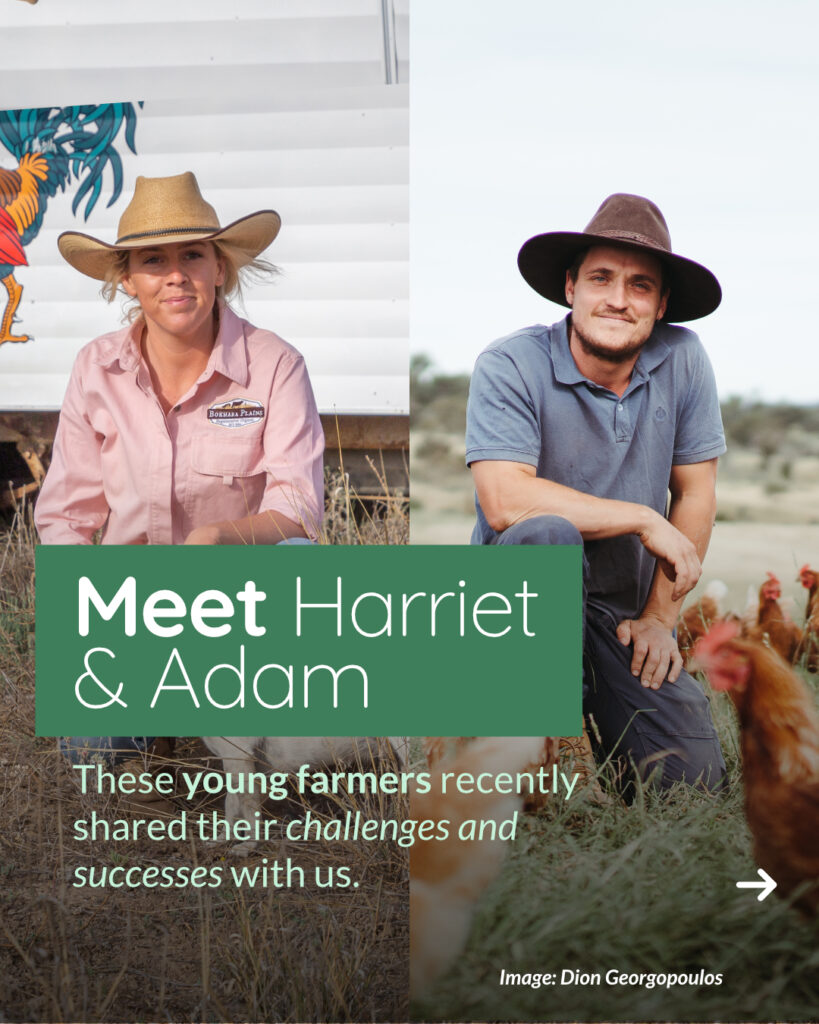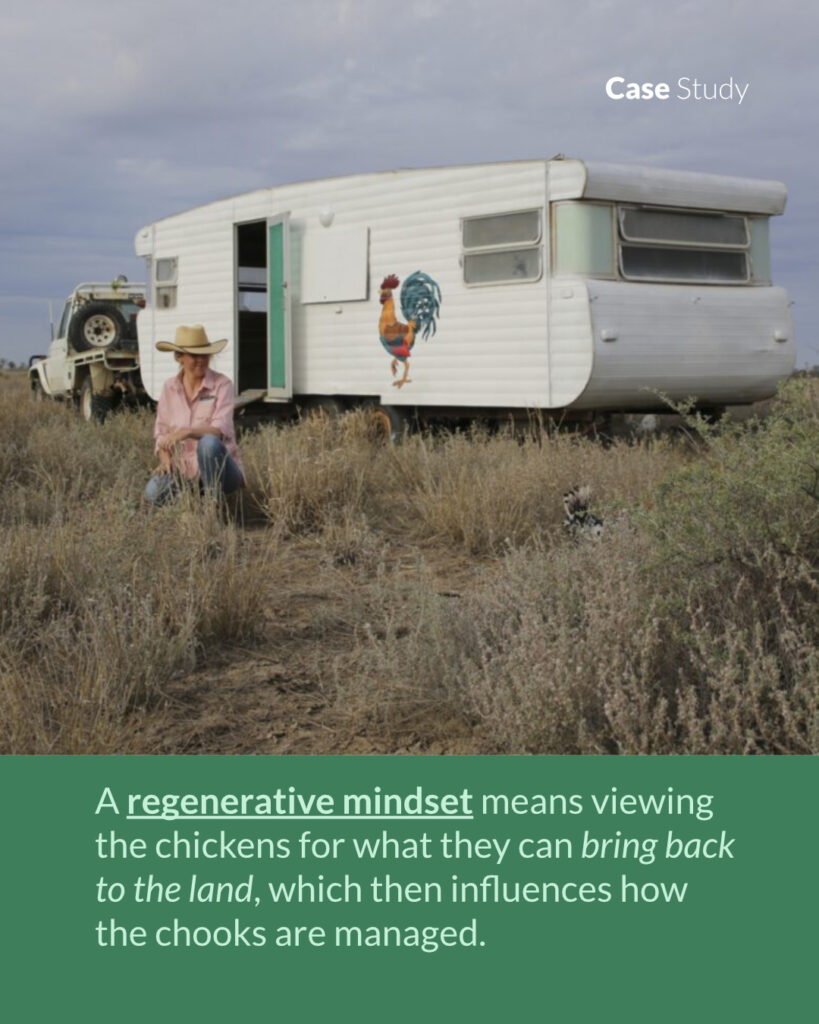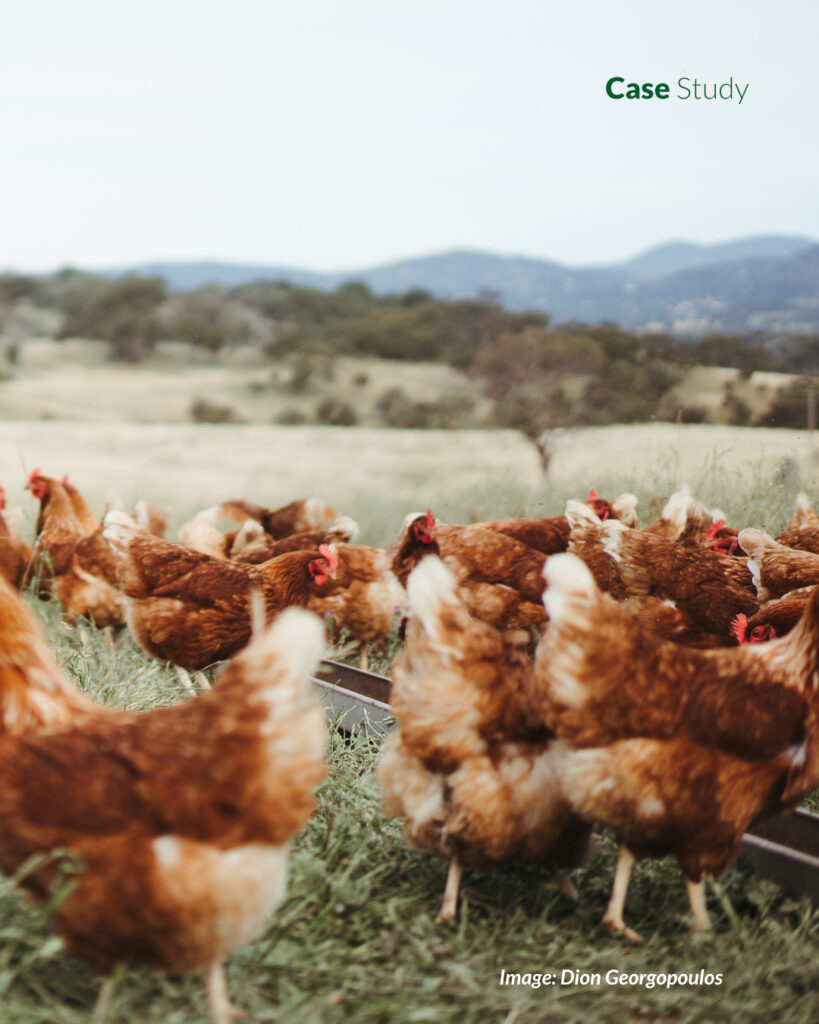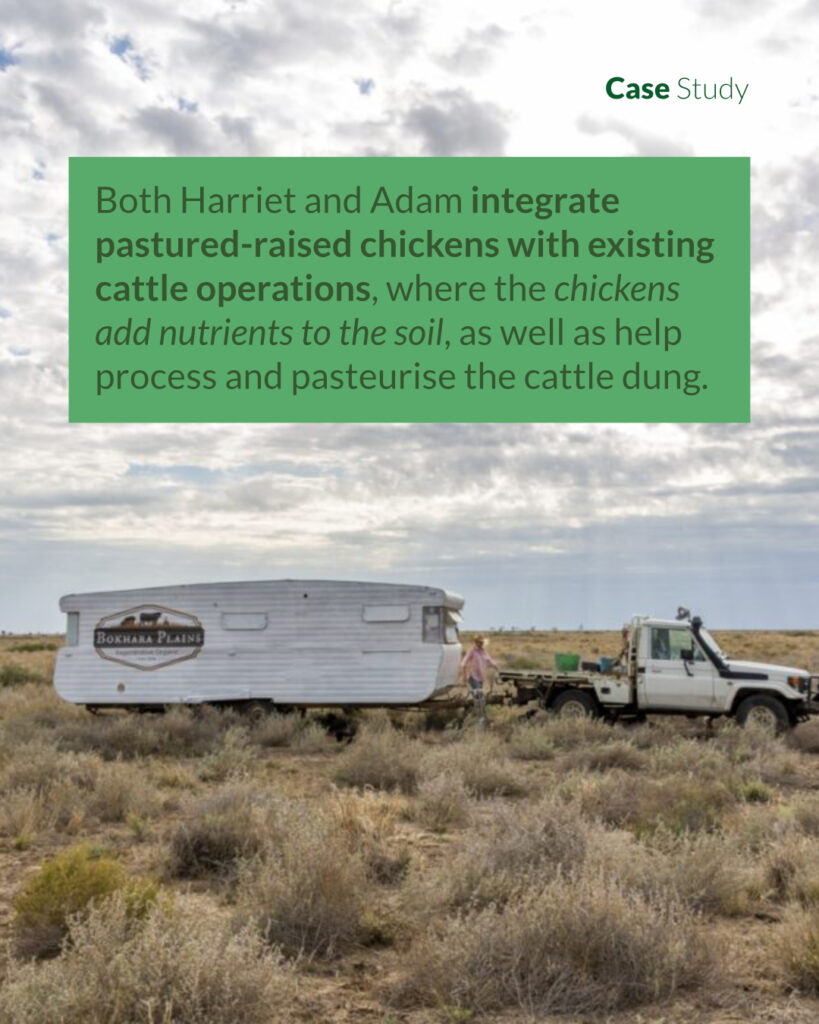Image: Dion Georgopoulos @ Canberra Times/ACM
'Farmers learning from farmers'
Insights into pasture-raised chickens
There are many benefits to regenerating soils and landscapes, but making changes on farm can be challenging. Most farmers go through a steep learning curve, unique to their place and business.
Over the past 10 years, Soils for Life has seen how conversations between farmers support this journey. This is why we facilitate farmer-to-farmer learning groups.
Most recently, we launched a learning group on regeneratively raised pasture chickens. From May to August, Soils for Life hosted five meetings with eight diverse farms across four states, with flocks ranging from 100 to 5,000.
Connecting with others was valuable for each group member. As one farmer said, “rather than being caught up in the bubble of your own farm, it’s good just to hear others talking, as well as learn and get encouragement from people on the same journey. “
“When you Google, you get a lot of information and opinions without verification. When you ask a question on regen Facebook pages, you might get answers from people with 15 hens.
When we talk here, we know someone has actual experience behind what they say, and we can get the story of how they arrived at what they do now – the unvarnished truth and the learning that has led to what they do now. That’s the learning side of things: the encouragement comes from talking with people we’ve come to know and trust, who have similar goals and face similar difficulties.”
Based on what was important to each farmer, the group decided on the topics to discuss. These topics included:
- Land stewardship
- Production
- Business models
- Marketing
- Financial considerations
- Self-care
Farmers shared their stories and lessons learned, and asked the group specific questions to gain feedback. Below are a few ideas that emerged.
Land stewardship with chickens
Many agreed that if managed well, pastures will absorb nutrients from the chickens and recover from compaction. Improvements show up in faster pasture recovery, quality of feed, and the look and feel of soil. They all recognised one big danger is leaving chicken trailers in one place too long because of the potential for scalding.
Several farmers found that paddock rest and multispecies crops after chickens fit together well to support pasture recovery, with species mix and timing worked out for the season and rotation. Sew and mulch, or plough/sew/harrow are options, and one farmer found that pigs will also break up compacted ground.
Business models
Several farmers are finding that Community Supported Agriculture (CSA) models provide a helpful foundation. One farm in their second year of CSA was serving 35 families a monthly box. Another farm (in their fifth year) was serving 70 families. Another tip was to fill out your monthly offer with vegetables from a farm next door, and bread from a bakery.
They agreed that CSA is a different kind of agriculture. The commitment by consumers to take a monthly box of food, and to stick with that for a year, is a commitment to share the risks and variability of farm production.
That makes for more resilience in the farm enterprise, and it gives people a way to be part of producing food ethically and responsibly.
One piece of advice to those just starting their business was to not wait too long to scale up because:
“as you scale up, you spread overhead across more throughput. The workload for 1,500 birds and 500 birds is similar. It’s always a big step up, but once you’ve done it, you’ll wonder why you didn’t do it earlier. This doesn’t mean growing forever – look for the sweet spot where the effort delivers a good result, for you.”
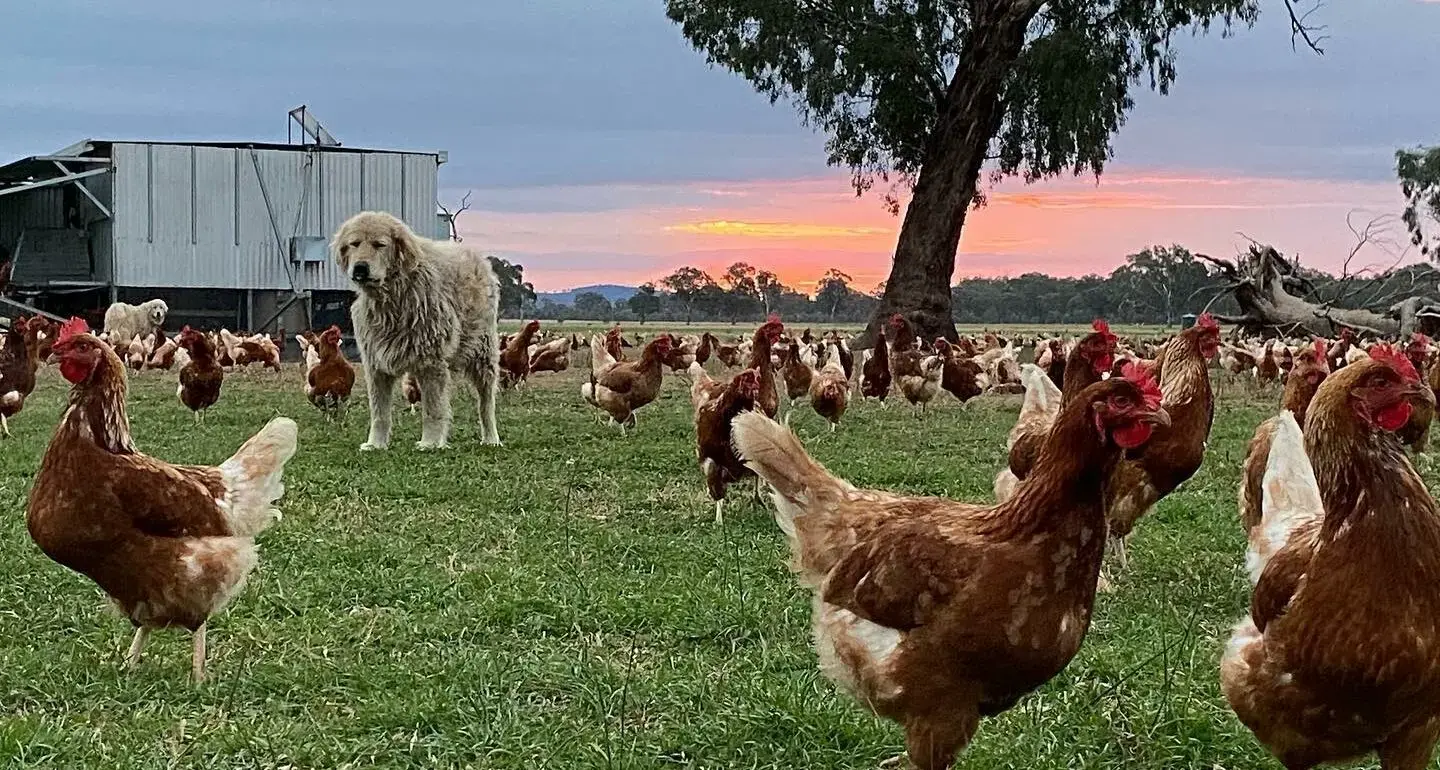
Sharing your story to build relationships
For most farmers social media plays an important role, particularly in ‘regenerative agriculture’ because it’s about making the enterprise transparent. Three of the businesses post daily on what is happening around the farm (in fact one farmer sometimes thinks of his business as an Instagram account with a farm attached!).
They were clear that the point is not just to entertain people, but to show them what it is like running this kind of business. The messy, unanticipated, or just plain disastrous things that happen are there alongside the amazing mornings and beautiful cattle.
Several of the farmers thought that social media and CSA both build the relationships around the business. The public Facebook page of one farmer provides many questions from people who often don’t end up buying anything. So why maintain the output? Because the farmer sees how this page builds people’s relationship with the business.
And when some of those stories include the consumers and the partner producers and the suppliers and the processors, that builds relationships between all those people. This forms an ecosystem where each starts to feel part of a different way of doing agriculture, and that strengthens the commitment to hang in there, make it work, and appreciate what they are part of.
When it comes to marketing and social media, everyone agreed that it’s your personal story that matters. The regeneratively grown product is better, for the consumer, for the animal, for the land, and for the planet. But you have to tell your story. Labels like ‘pasture-raised’ and ‘regenerative’ will wear out the more other producers use them, but your story is your story. Speak to what’s true for you, in your words. Then you can keep doing it, over and over!

Financial tips
One of the biggest financial recommendations was for farmers to:
“value your time. Pay for what others can do at $25-30/hour and leave yourself with time for the higher value work. Put yourself in the budget – if your time isn’t in the equation, you’re kidding yourself about your business. Be generous in your time estimates: things take longer than you would like them to but give them the time they actually need.”
For some, valuing their time meant finding ways to drive less. Unavoidably, kms are driven to get things done for slaughter, feed and delivery. But less kms to drive is ‘a gift of time.’
One farmer has an abattoir close by, and now she’s planning to get the butcher to drive to her, to slaughter on site. That’s all time for other things, like family life.
Other time savers were finding people who do business promptly, reliably, without having to be chased, and who up-date you when things change. When one farmer started with a small flock, he bought 20 kg feed bags. As he pushed flock numbers up, he kept chasing 20 kg bags. One day a mate saw him on the phone and said: ‘Stop doing that! Buy in bulk!’
On reflection of farmer-to-farmer learning
When asked what they wanted to do next to support themselves in their business, most farmers said that keeping on with the group was a priority. They had enjoyed the discussions,
sensed the benefit to them in their business, and had few other places where they could talk as they had in this group. So, after the initial five sessions facilitated by Soils for Life, the group has continued to meet monthly.
Coming up soon
Our next farmer-to-farmer learning group will be on regenerative cropping and will kick off this month. Do you have any questions about regenerative cropping, like:
- How are multi-species crops graded?
- How are weeds managed?
- What are the considerations for integrating livestock?
Pop on to our Facebook page to post your questions, and we’ll share ideas as they emerge from the case studies and learning groups.
Many thanks to Ross Colliver for facilitating these groups and skillfully capturing the insights.
This project is delivered by Soils for Life through funding from the Australian Government’s National Landcare Program.




